Chapter 13 BC Transfer Process
13.1 Transferring Between Post-secondary Institutions
British Columbia has an amazing transfer process. In fact, it is said to be the envy of the world, and many Canadian provinces and other countries are now trying to emulate it. A strong transfer process makes it much more convenient and flexible for students. This is not to be taken for granted.
Author’s Story: A Transfer Nightmare
My transfer experience many years ago was a nightmare. I did my first year of engineering at one university and transferred into engineering at a different university in the same province (not BC) for my second year.
Transferring from one university to another was a job in itself. There were no transfer agreements and the receiving university didn’t want to accept many of the courses from the sending university even though the courses and the course outlines were virtually identical. I had to go to the dean and argue my case for every single course. In some circumstances, I had to go to the professors and convince them that the courses I took were of a high enough quality. One professor wanted to see my lab notebook. Another asked to see my final project from a course; I had to request it from the sending university which didn’t want to comply. Still another gave me a very challenging test on the spot and insisted I pass it or I wouldn’t get credit. (I did!) It was hard work getting credit for my courses and a very intimidating process that took an incredible amount of perseverance. However, I still didn’t get credit for all my courses and had to repeat some.
When I came to BC and became an education advisor, I had an amazing respect and appreciation for the beautiful thing it was to have the BC Transfer Guide. I knew it was a good fit for me to be involved in the articulation process for post-secondary transfer. I regularly show students how to use the guide to do their education planning.
— Mary Shier, College of the Rockies
The British Columbia Council on Admissions and Transfer (BCCAT) oversees the BC Transfer System, enabling links between the BC colleges and universities, the government education ministries, and the public and private education sectors.
Articulation Committees
Articulation committees play a critical role in facilitating smooth student mobility between educational institutions in BC. British Columbia has articulation committees for 66 subjects that are offered in BC colleges and universities. They exist for most disciplines or programs that are delivered in more than one BC post-secondary institution. Articulation committees have provincial meetings every year, with representatives from all the BC post-secondary institutions that have courses or programs in the respective subject areas. At meetings, articulation committee members share information and discuss curriculum. They develop shared learning outcomes and discuss important changes in curriculum to ensure relevancy in their fields.
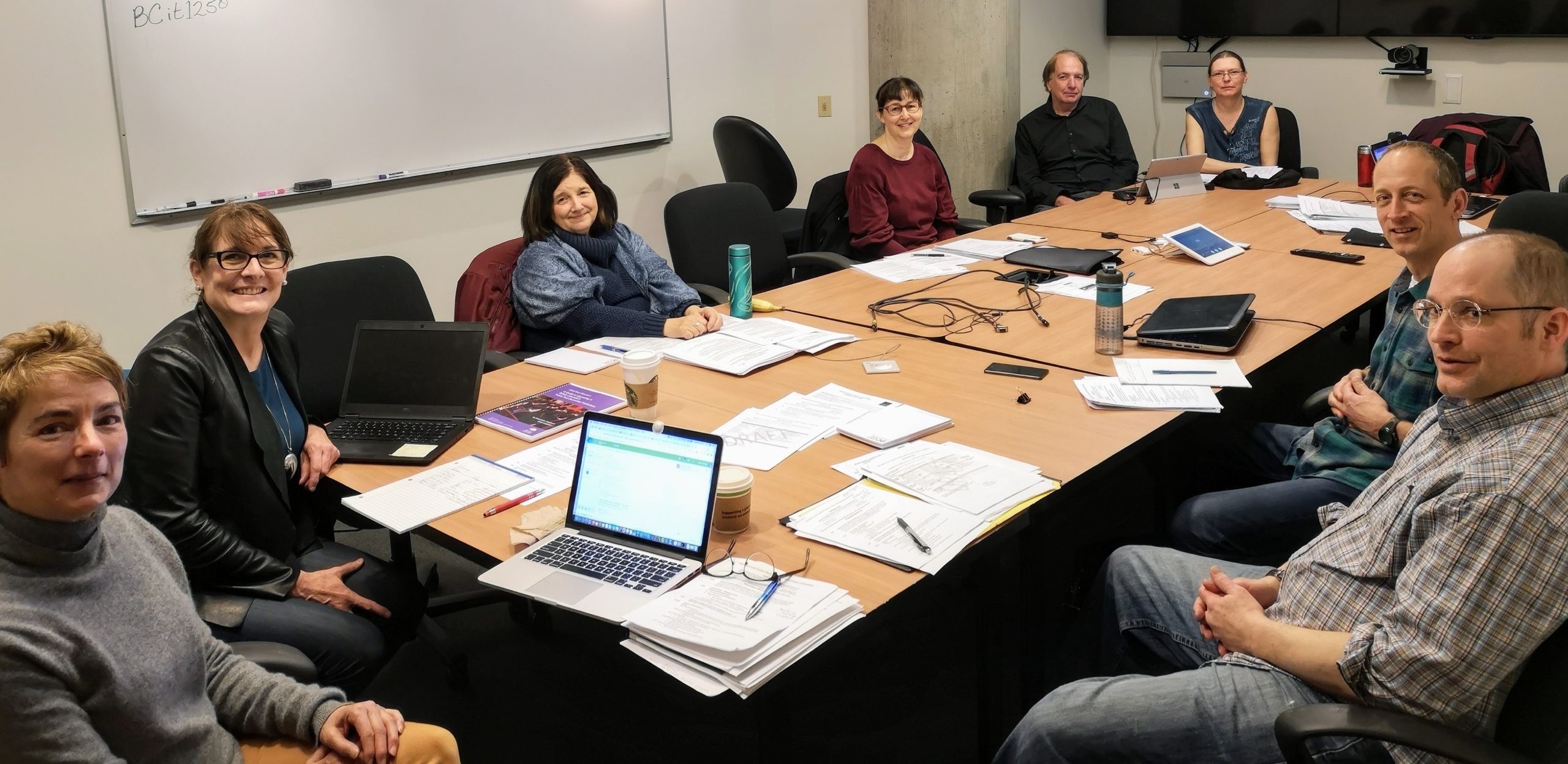
Each university and college has a voice at the table. The representatives discuss and agree on standards that they will use to decide whether courses will transfer from one institution to another. Sometimes whole programs are transferable. If you do a certificate or diploma at a college, it could have a prearranged block transfer allowing you to enter year two or three of a university degree program respectively.
See Articulation Committees for more information.
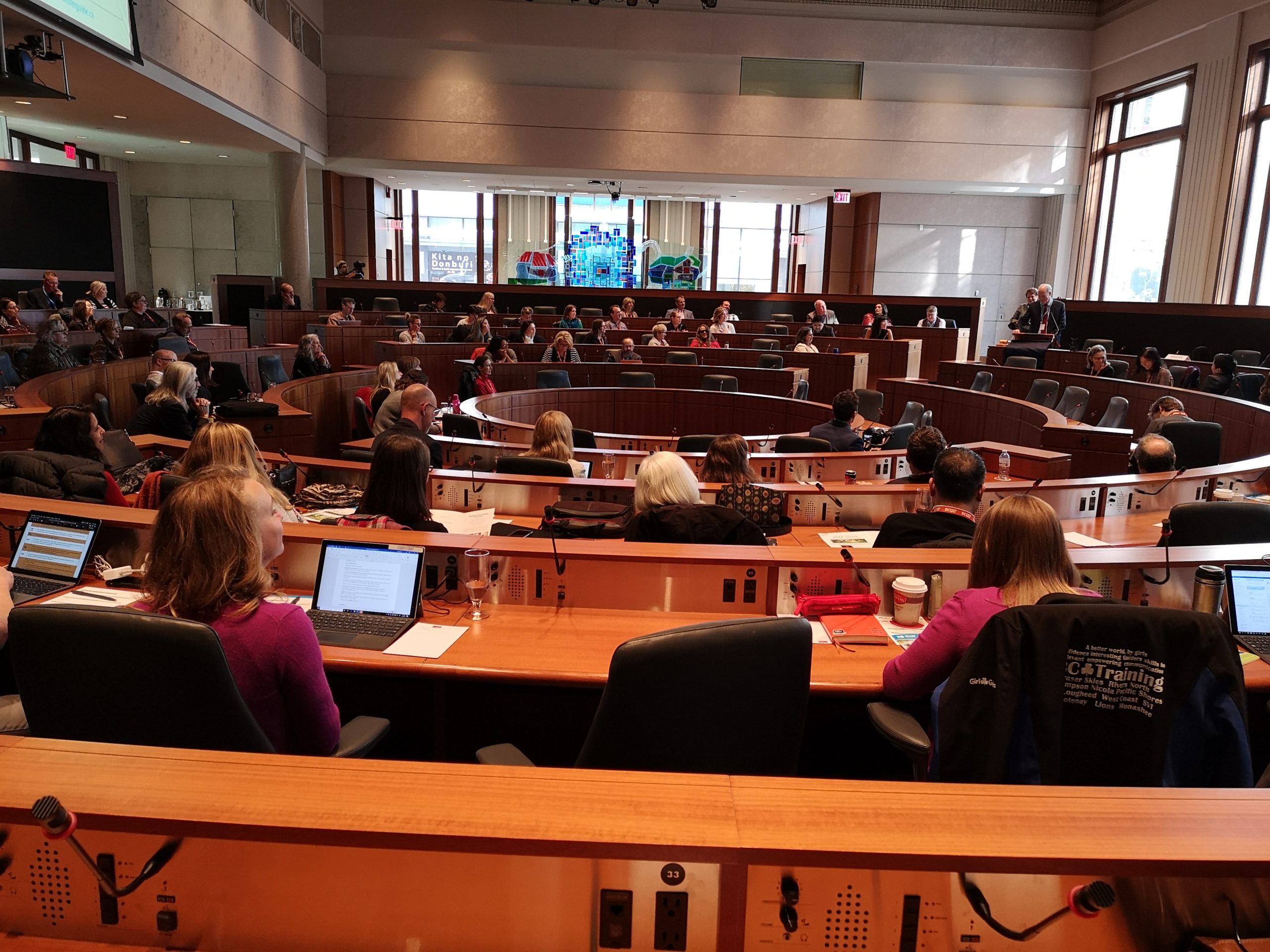
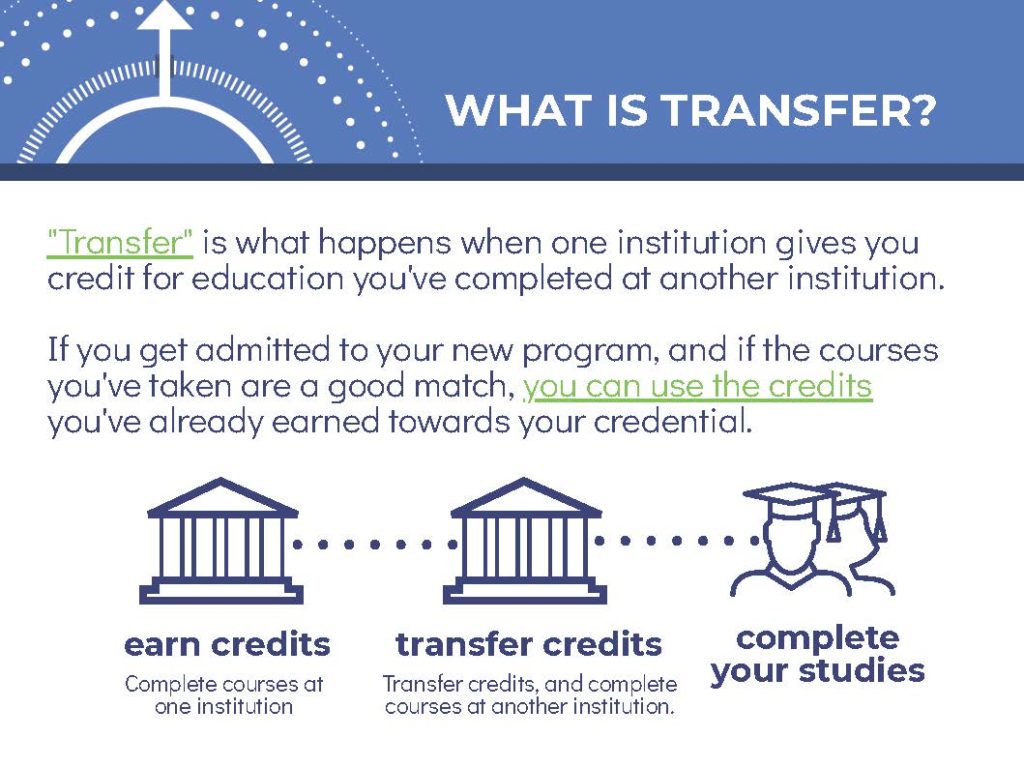
Reasons to Transfer
Sometimes transferring institutions wasn’t in the original educational plan. It may have been necessary for many different reasons. Sometimes transferring is in the plan from the start. Some students like the idea of doing their first year or two at a more convenient institution and then move to a bigger institution for their final years. Here are some of the reasons people build it into their original plans.
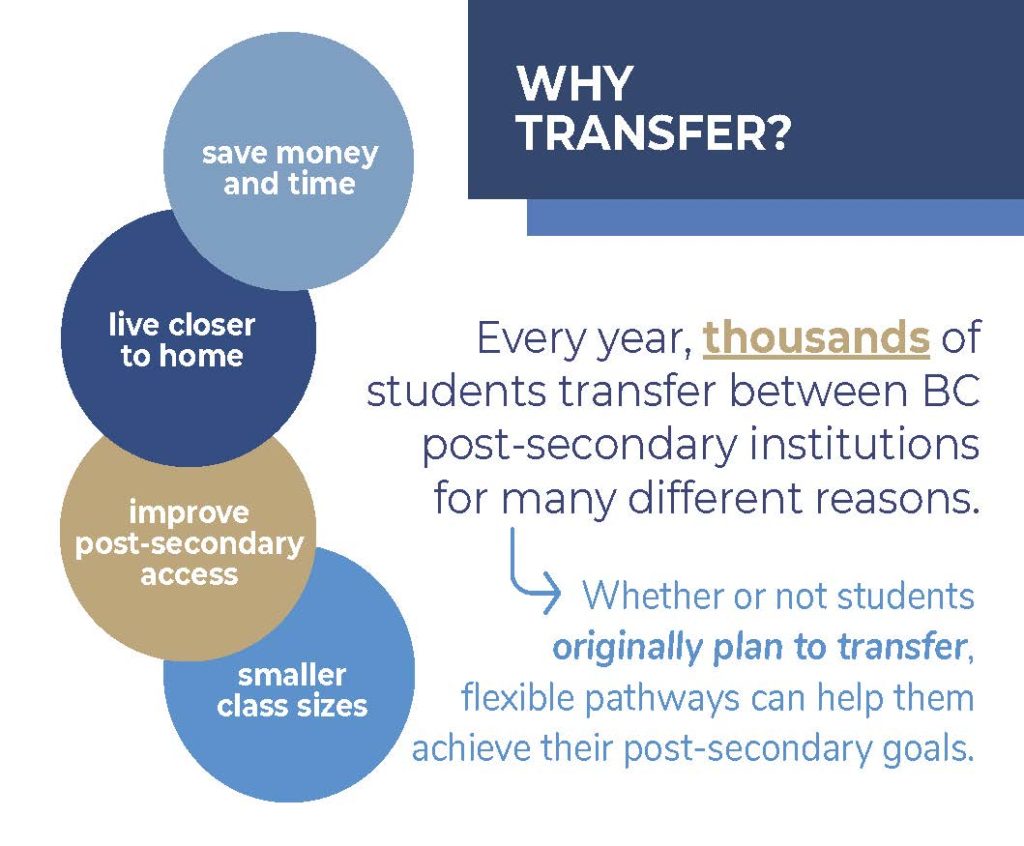
There have been studies done to evaluate the impact of transferring on students. In fact, it has been shown that there are many benefits for students to build transfer into their educational plan. Students who have transferred from one post-secondary institution to another have shown great student outcomes and were just as successful as students who entered university directly from high school. See Transfer Research for more information.
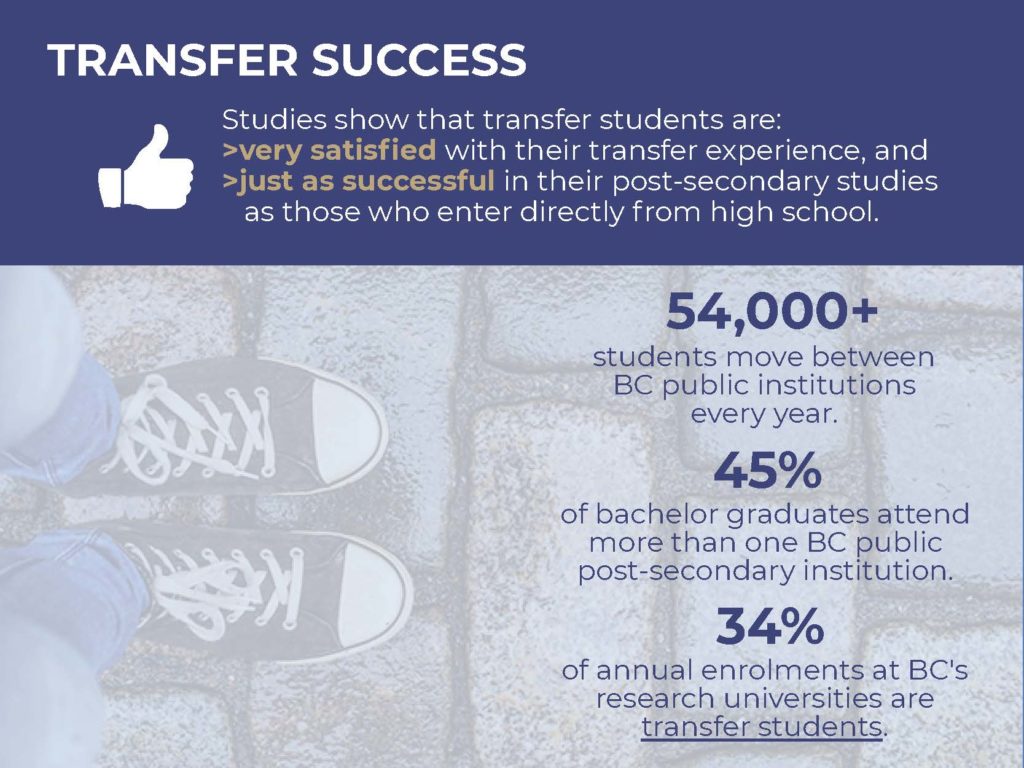
Transferring between institutions and/or using courses from other institutions towards your credential is becoming more and more prevalent. In this age of people moving locations, changing career goals, and juggling more and more circumstances while getting their education, transferring becomes increasingly more practical. No longer does transfer seem like a correction in someone’s educational path, but rather has become a part of people’s educational plan.
Image Descriptions
What is Transfer?: “Transfer” is what happens when one institution gives you credit for education you’ve completed at another institution.
If you are admitted to your new program, and if the courses you’ve taken are a good match, you can use the credits you’ve already earned towards your credential.
Process: Earn credits by completing courses at one institution. Then transfer credits and complete courses at another institution. Then complete your studies!
[Return to What is Transfer? image]
Transfer Success: Studies show that transfer students are very satisfied with their transfer experience and just as successful in their post-secondary studies as those who enter directly from high school:
- 54,000 students move between BC public institutions every year.
- 45% of bachelor graduates attend more than one BC public post-secondary institution.
- 34% of annual enrolments at BC’s research universities are transfer students.
[Return to Transfer Success image]
Media Attributions
- What is Transfer © BCCAT (used with permission) is licensed under a All Rights Reserved license
- Why Transfer © BCCAT (used with permission) is licensed under a All Rights Reserved license
- Transfer Success © BCCAT (used with permission) is licensed under a All Rights Reserved license
a prearranged transfer agreement between institutions that a set of courses will transfer as a block to another program, rather than having to apply for transfer credit for each individual course.

